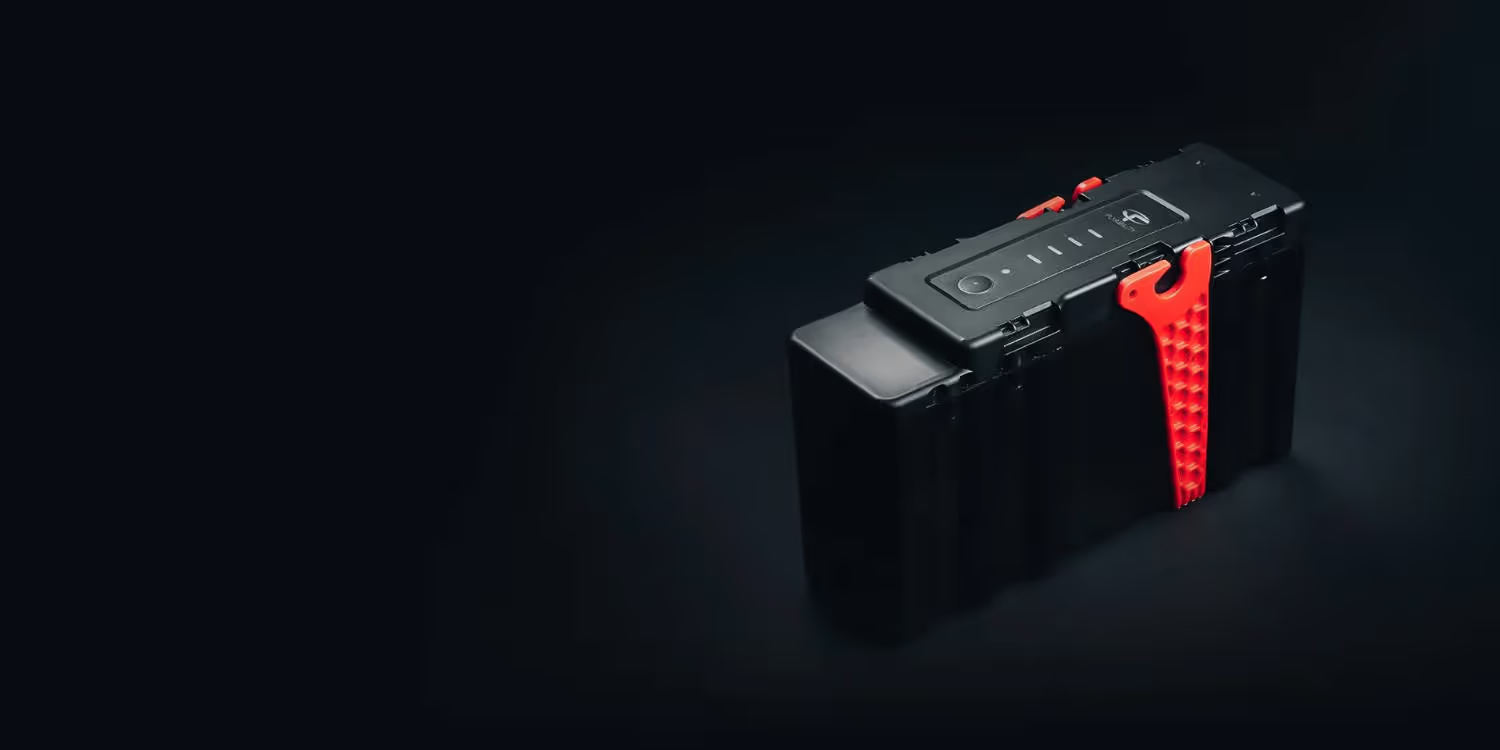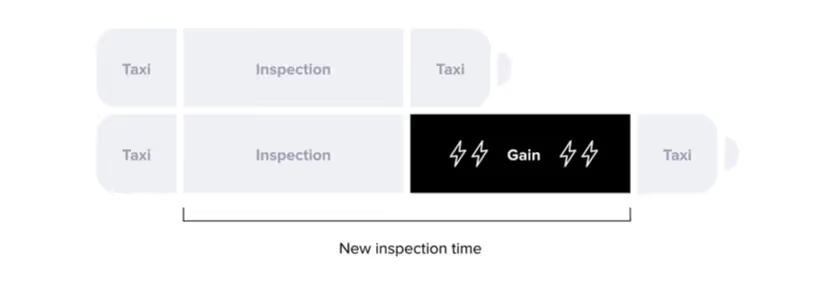

This upgrade means fewer interruptions and swaps, and increased productivity on site.
Upgrading to the high-capacity battery doesn’t just add minutes to your flight, it meaningfully boosts the time you can actually spend in operations. Because “taxi time” (the travel to your inspection target) stays the same regardless of battery size, all the extra capacity goes straight into productive inspection.
For example, when taxi time represents 25% of the standard battery's capacity, the effective inspection time of the high-capacity battery is doubled compared to the standard battery.

With up to 50% more flight time per charge, the new battery helps you cover more ground with fewer swaps; boosting both productivity and peace of mind. Built for endurance, it offers up to 100 charge cycles, reducing the cost per flight.
Want the full breakdown, including system level performance, safety info, payload compatibility and all the technicals? Download the document here.
Curious how the new battery performs in real-world conditions? Check out this video to hear from Elios 3 operators and see the high-capacity battery in use during live inspections. It covers side-by-side comparisons, practical feedback, and tips to get the most out of every charge.
If you’ve got questions about the high-capacity battery into your fleet or want local advice, get in touch with our team.
Yes, the high-capacity battery is compatible with all Elios 3 payloads. However, some payloads (such as UT and RAD) may see reduced flight time or lower maximum altitude. Refer to the tech specs for exact figures.
Yes, both battery types can be charged using the standard charger (150 VA), though the high-capacity battery will also work with the higher power 250 VA charger for faster charging.
No, the high-capacity battery is not IATA DGR compliant. It must be shipped via ground or cargo, while the standard battery is approved for carry-on air travel.
Yes, you can operate Elios 3 drones with both battery types in your fleet. Just make sure each battery is charged with the appropriate charger and the drone firmware is up to date for compatibility with both battery types.
Yes, Flyability requires you to update your Elios 3 to the latest firmware before using the high-capacity battery for safety and compatibility.
The high-capacity battery weighs 1,100 g (2.43 lbs), compared to 620 g (1.4 lbs) for the standard battery.
Yes, in some cases. The high-capacity battery may lower the maximum operating altitude or allowable temperature, especially when used with certain payloads. Always check the tech specs for your configuration.